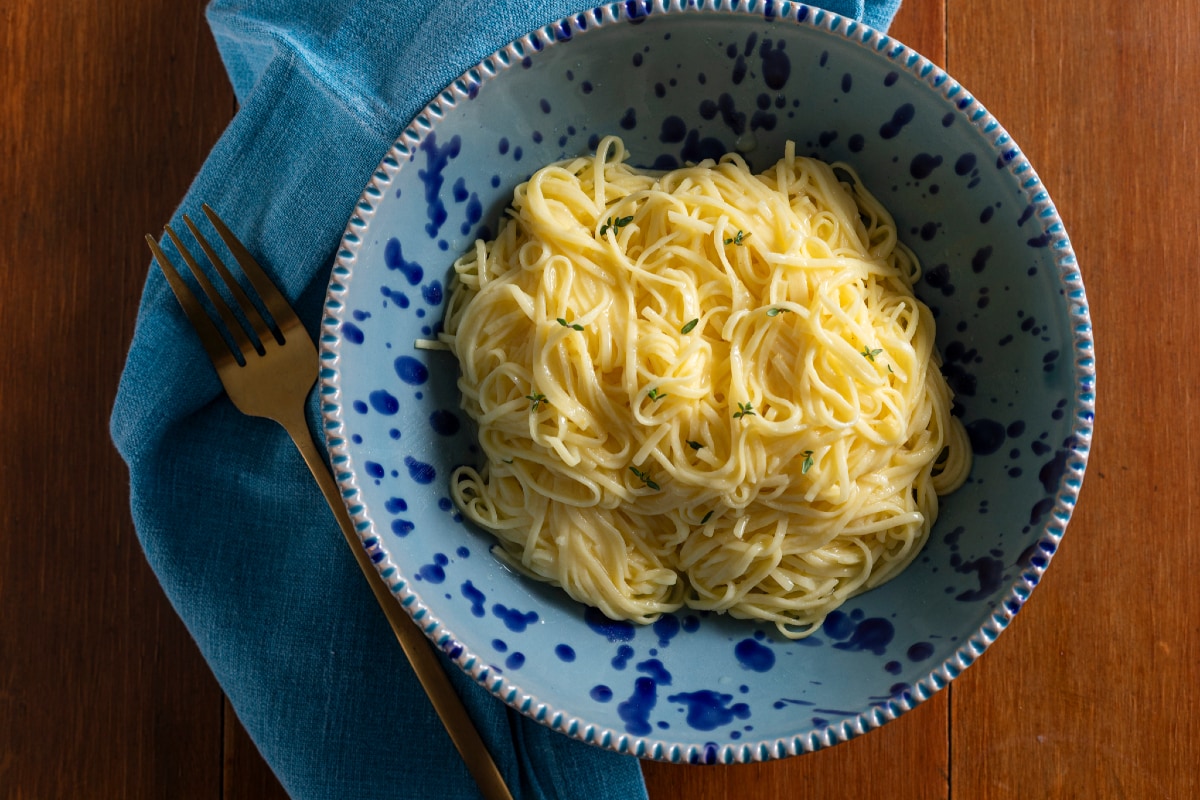Spaghetti with roasted lemon and prawns
- Easy
- 55 min


Lemon tagliolini are a delicious and delicate first course. In this recipe, we start with fresh pasta, which will make the dish even more flavorful and genuine! Whether you use a pasta machine or a rolling pin, make sure to achieve a very thin sheet of pasta approximately 1/16 inch wide, characteristic of tagliolini. Due to its structure, tagliolini is perfect for holding light and delicate sauces, allowing you to enjoy the creaminess of the butter, zest, and lemon juice sauce with every bite! For a more intense aroma and taste, we recommend choosing Sorrento or Amalfi lemons, with juicy and moderately acidic pulp... this way your lemon tagliolini will be truly irresistible!
Don’t miss these lemon first courses as well:

To prepare lemon tagliolini, first make the fresh pasta: in a bowl, pour the flour (you can use less than the recommended amount and add more as needed while kneading) and add the beaten eggs 1, then start mixing with a fork 2. When the ingredients start to combine, transfer to a surface to knead by hand 3. If necessary, add more flour little by little.

When you have a smooth and homogeneous dough, form a ball 4, and let it rest for at least 30 minutes at room temperature, in a cool, dry place. After resting, divide the dough into 2 portions 5; remember to keep the portion you are not using wrapped in plastic wrap to prevent it from drying out. Dust the portion you will roll out with a little semolina 6.

Now roll it out with the machine (alternatively, you can use a rolling pin), moving from the widest thickness to the narrowest until you get a very thin sheet 7. Cut rectangles of 10 inches in length 8, then cut the tagliolini using the appropriate roller of the machine (alternatively, roll the sheet on itself and cut the roll to obtain 1/16 inch wide strips) 9.

Collect the first tagliolini by hand 10 and roll them into nests 11; continue in this way until you run out of dough. Set aside the tagliolini nests on a tray dusted with a little semolina. Prepare the sauce: grate the lemon zest and squeeze its juice 12.

Strain the lemon juice 13 and weigh out 1.4 oz 13. In a large pan, pour the oil, a cube of butter (the rest will be used later), 14 thyme leaves, and lemon zest, then melt gently 15.

Cook the tagliolini in salted boiling water (not too vigorously) and cook for 1 minute. Drain the pasta into the sauce 16, add a ladle of the cooking water 17, and stir for a few moments to flavor. At this point, turn off the heat and mix in the remaining butter 18.

Mix quickly 19 to combine everything well 20. Plate and garnish with thyme leaves 21. Serve your lemon tagliolini immediately!